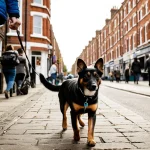Immediate Actions to Ensure Pet Safety in Urban UK Environments
Keeping pets safe in busy city settings demands immediate and practical steps by UK pet owners. The primary goal is preventing accidents and ensuring urban pet safety through simple, actionable measures.
Firstly, urban pet safety includes always supervising pets when outdoors in potentially hazardous areas such as busy streets and shared gardens. Ensuring your pet is securely leashed reduces risks posed by traffic and strangers. UK pet owners should invest in sturdy leads and harnesses suited for fostering control during walks.
In the same genre : How Can You Create a Welcoming Environment for Adopted Pets at Home?
Creating a quick-read urban safety checklist helps maintain consistent safety habits. This can include verifying secure fences, removing toxic plants from balconies or gardens, and avoiding discarded litter—which often contains dangerous substances or foods harmful to pets.
Real-life urban scenarios reveal common incidents: dogs darting into traffic or ingesting hazardous waste. These underscore the importance of immediate vigilance and proactive prevention.
In parallel : How Can You Navigate Pet Ownership Regulations in the UK?
Ultimately, embracing preventive safety steps offers UK pet owners peace of mind while navigating the complexities of urban life. Solid foundational actions ensure pets thrive safely amid the unique challenges of city living.
Navigating Urban Traffic: Road Safety Tips for Pets
Urban pet safety hinges significantly on managing traffic hazards effectively. UK pet owners must prioritise pet road safety when walking city pets, as busy streets present constant dangers.
Proper use of leads and harnesses is crucial. A sturdy harness, rather than a collar alone, offers better control and safety, especially in sudden traffic situations. Leads should be short enough to prevent pets from darting into roads but allow comfortable movement. Teaching your pet lead etiquette—walking calmly beside you without pulling—reduces risk and improves control on crowded pavements.
Identifying local accident blackspots is another vital step. UK pet owners should observe traffic patterns near their homes and popular walking routes. Common blackspots include busy junctions, poorly lit streets, and areas with fast-moving vehicles. Avoiding these or taking alternative routes helps prevent incidents.
In real-life UK scenarios, pets have been injured after slipping out of weak harnesses or darting into traffic during distractions. Consistent use of properly fitted leads and awareness of traffic hazards are the most effective ways to mitigate risks. These practical measures form the backbone of responsible urban pet safety.
Securing Outdoor Spaces in Urban Settings
Creating secure gardens and pet-friendly balconies is essential for urban pet safety. UK pet owners face unique challenges protecting pets from common outdoor hazards like open fences, toxic plants, and cluttered spaces. To effectively urban pet-proof outdoor areas, start by inspecting fences and gates for gaps or weak points that pets can escape through. Installing pet fencing designed to prevent digging or climbing adds a crucial layer of security.
Balconies require particular attention because many UK flats have railings wide enough for small pets to slip through. Using mesh or clear barriers can prevent accidents. Also, remove or isolate plants known to be toxic to pets, such as lilies or rhododendrons, commonly found in urban gardens.
Real-life incidents in UK cities show pets can get injured by broken garden tools, sharp objects, or ingesting harmful plants. Keeping outdoor spaces clear of debris and ensuring any harmful substances, like fertilisers or pesticides, are stored safely is an actionable pet safety tip.
By implementing these outdoor safety measures, UK pet owners reduce risks from urban hazards and create safe zones where pets can enjoy fresh air without danger.





